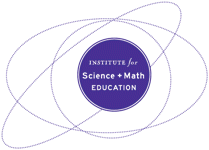Identifying local environmental justice phenomena for science and engineering investigations

- Teachers should engage students in local, personally relevant environmental justice science learning to develop more holistic understandings of current issues, possible solutions, and activisms to participate in.
- District Staff & PD Providers should help educators connect with EJ contexts and organizations to focus investigations on the everyday, interdisciplinary work of supporting frontline communities.
- School Leaders should support community-based EJ investigations, support the involvement of EJ organizations in classroom activities, and honor the expertise of students and community partners.
What is the Issue?
Making sense of phenomena that are based on pressing environmental justice (EJ) issues allows students to explore locally relevant concerns, to engage in meaningful science and engineering learning, and to engage in civic reasoning and action. Investigating local EJ issues that are personally meaningful provides crucial opportunities for students to understand the causes, implications, and various perspectives related to real issues in their communities and cultivate individual and collective agency. This type of learning adds relevance and supports youth in understanding, advocating for, and making change.
Image via Kiana Bosman, unsplash.com/@capturedby_kiana
Authors:
By Jennifer Pinney, Michal Robinson, Tina Miller-Way & Philip Bell
Edited by Rae Jing Han, Christina Guevara, Philip Bell, Abby Rhinehart & Deb L. Morrison
Reflection Questions
- What environmental justice issues are in your community? How is science illuminating an injustice—or how is science implicated in it? What designs are causing injustice—or how is justice promoted through design? What does meaningful EJ learning look like from community, student, and teacher perspectives?
- Whose interests are being served in EJ efforts? Is the focus on tech-as-savior, individual responsibility, degrowth, collective action, or systemic transformation?
Things to Consider
- Environmental justice (EJ) is a resistance movement in which the work starts, lives with, and is led by the people experiencing the harms and challenges of environmental injustices (e.g., water insecurity, toxic pollution, food insecurity), with the goal of moving everyone into the work of transforming injustices. Learn about environmental justice.
- Environmental policies and regulations do not keep pace with societal change (see how EPA and OEJ have progressed over time). Understanding and engaging with these issues can prepare young people to change the oppressive systems, values, and norms that have allowed inequitable practices and policies to persist.
- Help students develop compassion for and learn from people who are experiencing environmental injustices, including their own and/or other nearby communities. By focusing on local issues, teachers can help students avoid making judgments about what marginalized communities in other places “should” do, without understanding the full context. Engaging in nearby community issues can foster students’ sense of social responsibility and collective agency to be part of solutions.
- Environmental justice learning incorporates interdisciplinary perspectives. Students benefit from integrating ethics with concepts and practices from various subjects into a broader conceptual framework and exploring various viewpoints on EJ issues. EJ investigations help students understand how science must be integrated with other disciplines to inform ethical decisions for communities.
Attending to Equity
- Environmental injustices tend to be created by dominant ideologies underlying decisions and actions such as: imbalanced resource extraction, disproportionate protections, and unsustainable patterns of consumption. Use firsthand perspectives from frontline communities in investigations, including responses that promote community thriving (e.g., Climate Frontlines). Center non-dominant leaders (e.g., BIPOC, low socio-economic communities & womxn) to enact ideologies and values supporting healthy communities. Include different forms of storytelling to highlight community narratives—photos, videos, art, poetry, testimonials, and dance.
- Communities include both humans and more-than-humans. Science should be used to advocate for healthy, just, and thriving conditions for all living beings. Considering the place-based nature of environmental injustices, how can you respond to different histories of places that derive from power and privilege?
Recommended Actions You Can Take
- Consider using these criteria and this process to identify a meaningful anchor phenomenon. To stay focused on EJ phenomena, also ask: (1) Does the phenomenon disproportionately or differently affect a community of color and/or a poverty-impacted community? (2) Can students access different forms of evidence (e.g., narrative accounts, photos, maps, quantitative data) and connect with local community experts to support their sense-making of the phenomenon? (3) Does this phenomenon allow students to explore the different dimensions and principles of EJ?
- Identify local EJ issues: EJSCREEN and EPA data and mapping tools can help find sites of local relevance. Public GIS databases can also support place-based interdisicplinary investigations: Tree Equity Score, How’s My Waterway?, AirNow, Current Flooding Conditions & Flood Risk Map, Social Indicators for Coastal Communities Initiative & Interactive Map.
- Engage students in self-documentation to identify EJ issues faced by their own communities and how they have been responding to them.
- Leverage critical engineering design and the practice of communication to support meaningful responses to environmental injustice. Responding to environmental harms includes design-related actions of repair, clean up, and/or abatement, as well as strategic communication to help correct prejudices outsiders may have about a community.
Supplemental Material: What is environmental justice? Why we should connect our science and engineering investigations to local environmental justice phenomena
ALSO SEE STEM TEACHING TOOLS
- #42: Phenomena-Based Inquiry
- #67: Justice-Centered Phenomena
- #70: Intersectional Env Science
- #83: Justice-Centered Assessment
- PD E: Anchor Phenomena
STEM Teaching Tools content copyright 2014-22 UW Institute for Science + Math Education. All rights reserved.
This site is primarily funded by the National Science Foundation (NSF) through Award #1920249 (previously through Awards #1238253 and #1854059). Opinions expressed are not those of any funding agency.
Work is licensed under a Creative Commons Attribution-ShareAlike 4.0 Unported License. Others may adapt with attribution. Funded by the National Science Foundation (NSF). Opinions expressed are not those of any funding agency.


 Email Feedback
Email Feedback

